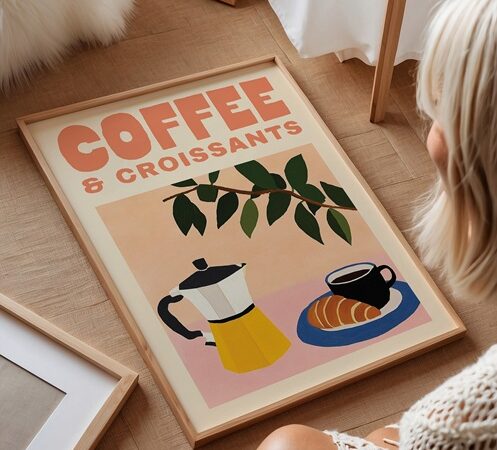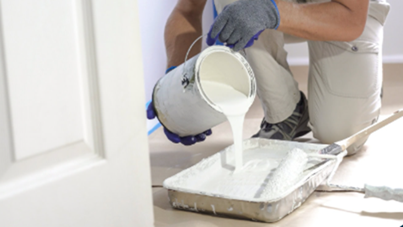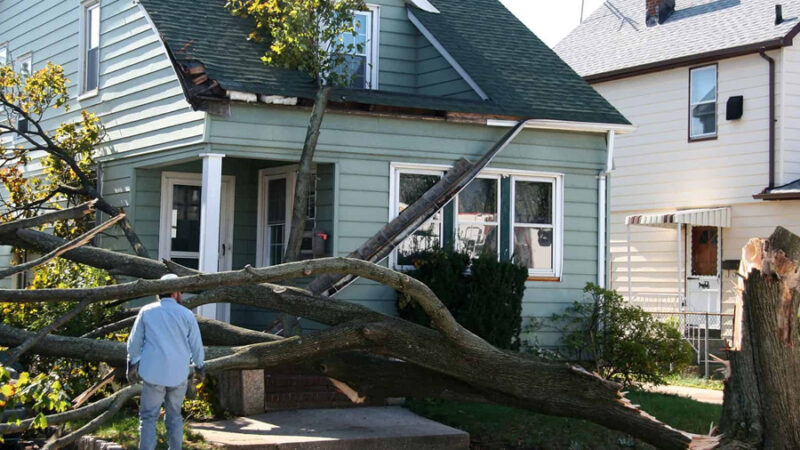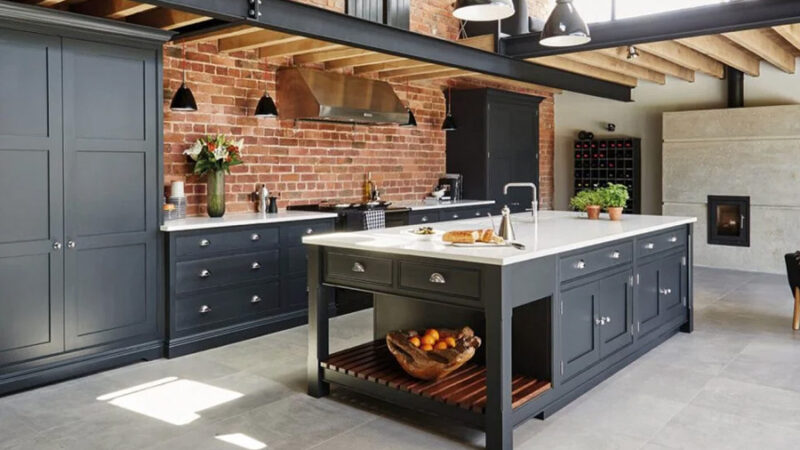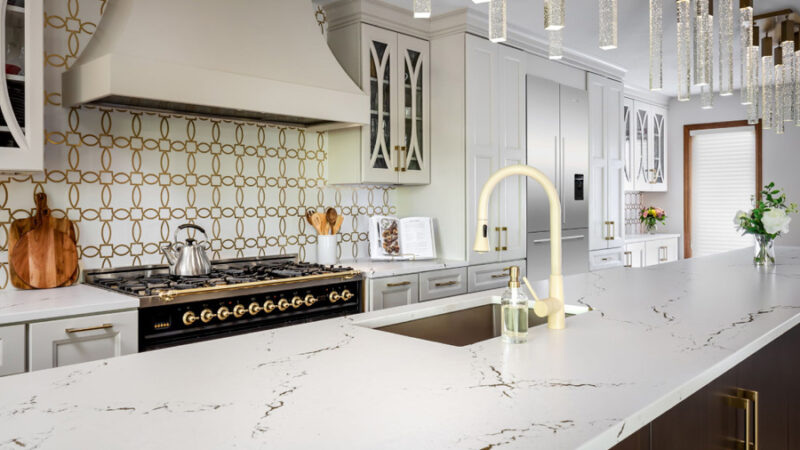Decorating Trends and Techniques for UK Homes
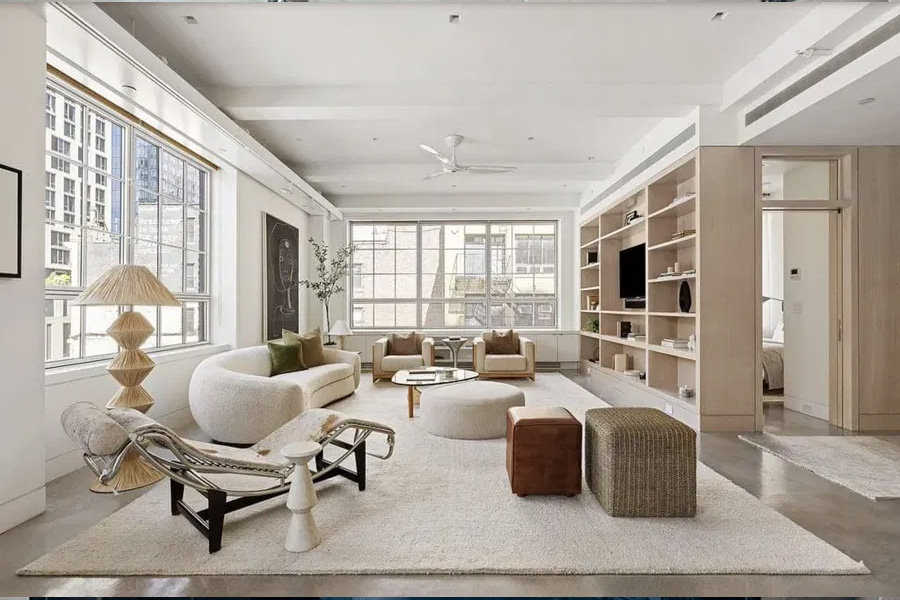
The landscape of British home design is constantly evolving. This guide explores the latest movements shaping interiors across the UK. It offers professional insights into modern approaches that skilfully balance aesthetics with practical, everyday functionality.
There is a growing desire for personalised, sustainable, and budget-conscious solutions. These approaches honour the unique character of British properties, from charming period homes to sleek contemporary spaces. The focus is on creating living environments that truly reflect their occupants.
Readers will discover practical strategies for refreshing their homes. The guide combines respect for traditional craftsmanship with innovative, contemporary design principles. This ensures a result that embraces modern living needs while acknowledging architectural heritage.
Essential aspects of home decoration are covered in detail. This includes intelligent colour schemes, effective wall treatments, and thoughtful furniture selection. The guide also delves into lighting solutions and space optimisation techniques specifically relevant to UK properties.
Actionable advice is supported by real-world examples and expert perspectives. The content provides cost-effective solutions for homeowners and renters alike. It draws from established design principles while incorporating the current trends shaping UK interior design today.
Key Takeaways
- Explore contemporary design trends tailored for British homes.
- Discover methods to balance visual appeal with practical functionality.
- Learn about sustainable and personalised interior solutions.
- Gain strategies that work for both period properties and modern spaces.
- Find actionable advice on colour, furniture, lighting, and space use.
- Access cost-effective ideas suitable for various budgets.
- Combine traditional craftsmanship with innovative design principles.
Introduction to Contemporary Decorating
Today’s approach to UK home styling prioritises personal expression alongside functional practicality. This modern philosophy represents a thoughtful blend of traditional British design sensibilities with current aesthetic principles. The result creates living spaces that feel both contemporary and timeless.
The focus has shifted significantly towards sustainability and flexibility. This reflects changing lifestyles and environmental awareness among British homeowners. Rather than following rigid style rules, the emphasis is on creating homes that tell unique personal stories.
Contemporary design acknowledges Britain’s diverse architectural landscape. From Victorian terraces to modern apartments, each property requires tailored approaches. Designers consider factors like natural light, room proportions, and daily usage patterns.
Current trends favour authenticity over perfection, encouraging homeowners to embrace imperfections. This approach celebrates craftsmanship and allows spaces to evolve organically over time. For deeper inspiration, explore various interior design styles that can inform your personal decorating journey.
Modern Colour Schemes and Paint Techniques
Modern British interiors increasingly rely on strategic paint applications to define character and atmosphere. These approaches transform spaces through careful colour selection and innovative techniques.
Homeowners discover that thoughtful paint choices create personalised environments. The right colours establish mood while respecting architectural features.
Sustainable Paint Options
Environmentally conscious decorators now prioritise low-VOC and natural paint formulations. These products maintain excellent coverage without compromising indoor air quality.
Sustainable options demonstrate that eco-friendly choices need not sacrifice performance. They offer durable finishes suitable for various room types.
Bold Accent Colours for Impact
Strategic use of bold accent colours creates focal points without overwhelming spaces. Applying vibrant hues to single walls or architectural details delivers maximum visual impact.
Blue remains a dependable base colour for its versatile pairing capabilities. It works beautifully with both warm earthy tones and cool neutrals.
| Paint Type | Key Features | Best Uses | Durability |
|---|---|---|---|
| Matte Emulsion | Non-reflective finish, hides imperfections | Living rooms, bedrooms | Medium |
| Eggshell | Subtle sheen, washable surface | Hallways, children’s rooms | High |
| Gloss | High shine, moisture resistant | Woodwork, kitchens | Very High |
| Low-VOC | Eco-friendly, minimal odour | All interior spaces | Medium-High |
For additional inspiration on colour combinations, continue reading our comprehensive guides. The table above helps select appropriate paint types for different applications.
Cutting-edge Wall Treatments and Panelling
Modern panelling and wallpaper applications offer creative solutions for enhancing architectural character in UK properties. These techniques transform surfaces with both aesthetic appeal and practical benefits.
Innovative Wallpaper Designs
Contemporary wallpaper patterns range from bold botanicals to subtle textures. They add depth without overwhelming spaces.
Creating a feature wall with luxury wallpaper provides an economical approach. Existing picture rails reduce material needs and costs significantly.
Pitched ceilings present unique opportunities often overlooked. Eye-catching wallpaper applications transform these surfaces into dramatic focal points.
Feature Walls and Decorative Panelling
Strategic feature wall placement defines zones in open-plan layouts. It creates visual interest without structural changes.
Moisture-resistant MDF offers a cost-effective alternative to traditional timber. This material performs well in humid environments like bathrooms.
Modern wallpaper technology includes washable and strippable varieties. These simplify application and future updates for renters and homeowners.
For further inspiration on transforming your wall spaces, continue reading our comprehensive guides. This advertisement-free content provides valuable insights for your home improvement journey.
Innovative Furniture and Cabinet Upgrades
The art of repurposing furniture has gained significant momentum in contemporary British home design. This approach celebrates craftsmanship while delivering modern functionality. Homeowners discover creative ways to refresh their spaces without complete replacements.
Innovative upgrades focus on breathing new life into existing pieces. They preserve quality construction while updating aesthetics. This method suits contemporary tastes and practical requirements perfectly.
Repurposing Vintage Pieces
Carefully selected antique furniture often offers superior construction quality. Repurposing vintage items introduces unique character into homes. This approach supports sustainable consumption practices beautifully.
Vintage dressers and standalone islands create personal, lived-in aesthetics. Homeowners can collect elements gradually as budgets allow. Mixed pieces develop eclectic schemes that feel collected over time.
Budget-friendly Cabinet Refaces
Cabinet transformations need not involve complete replacements. Fabric panel substitutions offer inventive alternatives to traditional doors. Vanessa Arbuthnott’s Gloucestershire kitchen demonstrates this approach effectively.
Instead of removing cabinets that had served for over twenty years, she swapped some fronts with Little Fern fabric panels. This created a fresh look while preserving the original structure. Kitchens composed of individual elements feel more personal and flexible.
Budget-friendly refaces include painting units, replacing hardware, or adding decorative mouldings. These methods dramatically reduce costs compared to full replacements. They allow for future rearrangement as needs change.
For additional inspiration on furniture transformations, continue reading our comprehensive guides. This advertisement-free content provides valuable insights for your home improvement journey.
Affordable Decor with a Personal Touch
Creative resourcefulness often yields more characterful results than substantial financial investment in home styling. This approach celebrates individuality while respecting budget constraints.
Thrifty Home Bars and DIY Fixtures
A narrow corridor in a Sussex home demonstrates clever space utilisation. Mismatched shelves and hooks create a functional bar area. A frothy green curtain on a brass rail conceals bottles beautifully.
Picture framing represents a significant expense that can be dramatically reduced. Charity shops and antique fairs offer excellent frames often overlooked with uninspiring artwork. Repurpose these for your own pieces.
Even stylish rural homes incorporate affordable high-street finds. IKEA items can be updated with paint or displayed proudly as they are. This strategic approach balances budget with quality.
| Budget Method | Cost Saving | Character Added | Skill Level Required |
|---|---|---|---|
| Thrifty Home Bars | High (80-90%) | Significant personal touch | Basic DIY skills |
| Vintage Frame Repurposing | Medium (60-70%) | Unique heritage appeal | Simple refurbishment |
| High-Street Integration | Medium (50-60%) | Modern functionality | Minimal to moderate |
| DIY Fixture Installation | High (70-85%) | Complete customisation | Intermediate skills |
These approaches demonstrate that thoughtful decorating need not be expensive. Personal touches create environments that truly reflect their inhabitants’ stories.
Embracing Sustainable Decorating Methods
Sustainable approaches to home styling now focus on environmental responsibility as a core principle. This philosophy extends beyond material choices to encompass waste reduction and longevity-focused design decisions.
Textiles and tapestries offer excellent alternatives to traditional framed artworks. They’re cost-effective and easy to install while minimising wall fixings. This approach avoids the challenge of coordinating multiple pictures.
Mixing timber varieties creates visually interesting combinations. Dark tropical hardwoods paired with warm golden maples produce beautiful contrasts. Salvaged timber introduces character from different historical periods.
The circular economy principle encourages creative reuse of leftover materials. Project remnants often provide enough material for splashbacks or flooring inserts. These elements can find new purposes with imaginative thinking.
Sustainable methods prioritise natural and renewable materials. These choices improve indoor air quality while reducing environmental impact. They often deliver superior aesthetic qualities compared to synthetic alternatives.
The “buy less, choose well, make it last” philosophy proves particularly relevant. Investing in quality pieces withstands trends better than frequent replacements. This approach benefits both budgets and the environment.
Thoughtful planning minimises waste during projects. Accurate measurements and creative problem-solving transform potential waste into unique design features. These elements add character to finished spaces.
For more insights on sustainable approaches, continue reading our comprehensive guides. These things collectively create homes that are both beautiful and environmentally responsible.
Mixing Traditional with Contemporary Design
The fusion of period features with contemporary elements produces spaces rich in personality and sophistication. This approach creates an interior that feels both collected and personally curated rather than bound to a single stylistic period.
Historic Elements Reimagined
Traditional architectural details gain new life when paired with modern accents. Pairing elaborate ceiling roses with minimalist pendants creates engaging visual contrasts that honour heritage while embracing current aesthetics.
This sophisticated friction allows each element to enhance the other’s qualities. The approach requires understanding which traditional features merit celebration versus those that benefit from updating.
In Victorian house designs, dominant features like marble fireplaces can be visually integrated into wall schemes. Painting them to match surrounding surfaces allows other design elements to take precedence while maintaining architectural integrity.
Farmhouse interiors particularly benefit from this blending approach. Rustic structural elements like exposed beams provide characterful backdrops for sleek modern furniture. These combinations have stood the test of years while feeling completely current.
Successful style mixing demonstrates restraint and intentionality. It avoids including elements from too many periods, which can result in confused spaces lacking cohesive identity. The most compelling rooms create dialogue between old and new rather than jarring discontinuity.
Enhancing Spaces with Creative Lighting
Lighting design plays a crucial role in defining the atmosphere and functionality of modern British homes. Strategic illumination transforms ordinary rooms into versatile living environments. It addresses both practical needs and aesthetic considerations simultaneously.
Modern wall lamps represent an often-overlooked solution for compact living areas. They provide soft illumination without consuming valuable surface space. Designs range from sleek mid-century styles to decorative brass sconces.
The affordability of wall lights enables purchasing pairs to flank beds or sofas. Brass finishes add warmth while creating symmetrical arrangements. This approach delivers both ambient glow and practical reading light.
Modern Wall Lamps and Fixtures
Wall-mounted fixtures offer styles complementing contemporary and traditional schemes. Their articulated designs allow directional adjustment for targeted lighting. Fabric-shaded options diffuse light beautifully throughout the space.
Ambient and Task Lighting Solutions
Layered lighting schemes incorporate ambient, task, and accent elements. Ambient lighting establishes comfortable base illumination through ceiling fixtures. Task lighting addresses specific activities like reading or cooking.
Strategic placement influences perceived room proportions significantly. Uplighting makes ceilings appear higher, while sconces add width perception. Smart technology now allows colour temperature adjustment and programmed scenes.
| Lighting Type | Primary Function | Ideal Locations | Energy Efficiency |
|---|---|---|---|
| Ambient Lighting | General illumination | Living rooms, bedrooms | High (LED) |
| Task Lighting | Specific activities | Desks, kitchens | Medium-High |
| Accent Lighting | Highlight features | Artwork, architecture | Variable |
| Wall Lamps | Space-saving glow | Hallways, beside beds | High (LED) |
These lighting strategies demonstrate how thoughtful decorating enhances daily living. For more detailed guidance on illuminating your home, continue reading our comprehensive series.
Optimising Small Spaces for Maximum Impact
Strategic furniture placement transforms compact areas into highly functional living environments. This approach challenges conventional wisdom about small room design. It focuses on maximising comfort rather than preserving empty floor space.
In living areas, selecting substantial furniture often works better than multiple small pieces. A generous L-shaped or U-shaped sofa provides superior comfort. Empty floor space offers little practical value in these spaces.
Children’s bedrooms benefit from compact sleeping arrangements. Box beds and bunk beds consolidate overnight functions into minimal footprints. This strategy frees valuable floor area for daytime activities and play.
Landings and transitional areas deserve thoughtful attention in smaller houses. These non-territorial spaces accommodate overspill from adjacent rooms. Adding comfortable seating creates alternative spots for relaxation.
A professional designer approach combines multiple techniques for maximum impact. The table below compares effective strategies for different room types.
| Optimisation Technique | Best For Room Type | Key Benefit | Implementation Level |
|---|---|---|---|
| Large Seating Furniture | Living Rooms | Maximises comfort in limited space | Easy |
| Vertical Storage Solutions | Bedrooms, Studies | Utilises unused vertical space | Moderate |
| Multifunctional Furniture | Small Apartments | Serves multiple purposes | Moderate-Hard |
| Compact Sleeping Arrangements | Children’s Rooms | Frees daytime floor space | Hard |
This content provides genuine guidance without commercial advertisement. Thoughtful decorating creates environments that feel spacious despite physical constraints. The approach balances generous comfort features with clever spatial arrangements.
The Impact of Texture and Material in Interiors
Beyond colour and form, the physical properties of surfaces contribute significantly to interior character and comfort. Material selection creates sensory experiences that engage touch as well as sight.
Varied textures prevent spaces from feeling flat or overly processed. They add depth and sophistication to any decorating scheme.
Integrating Natural Elements
Natural materials like timber, stone, and organic textiles introduce warmth and authenticity. They create connection to the natural world within domestic environments.
Mixing timber varieties produces compelling visual narratives. Dark tropical hardwoods contrast beautifully with pale maple tones.
Salvaged timber from different historical periods adds character impossible to replicate. These elements tell stories through their unique grain patterns.
Preserving raw, uncut edges celebrates material authenticity. Rough marble edges and textile selvedges provide tactile interest.
| Material Type | Textural Quality | Best Applications | Maintenance Level |
|---|---|---|---|
| Natural Timber | Warm, organic grain | Flooring, furniture | Medium |
| Stone Surfaces | Cool, solid feel | Worktops, flooring | High |
| Textile Elements | Soft, tactile surface | Upholstery, wall hangings | Low-Medium |
| Woven Accessories | Detailed texture | Baskets, decorative items | Low |
Textiles offer cost-effective alternatives to traditional framed artworks. They introduce softness while serving practical functions.
Understanding material properties ensures appropriate selection for different applications. Some materials gain character through natural ageing.
For more insights on material selection, continue reading our comprehensive guides. These things collectively create rich, engaging interior environments.
Transforming Kitchens and Bathrooms with Style
The transformation of kitchens and bathrooms offers some of the highest returns on home improvement investments. These hardworking spaces require careful balance between aesthetic appeal and practical functionality suited to demanding usage patterns.
Practical Upgrades and Chic Finishes
Kitchen transformations need not involve complete replacements. Strategic upgrades like new cabinet doors, updated hardware, and fresh paint finishes create dramatic improvements at fractions of full renovation costs.
Charli Howard’s liquorice-black kitchen demonstrates bold colour choices done well. Clay-pink walls and ceilings temper the rich cabinetry tones, while gloss finishes reflect light beautifully.
Interior designer Danielle Tanner recommends peninsula islands for small kitchen layouts. “It gave us extra seating without compromising storage,” she notes. This approach maximises floor space efficiency.
Bathroom upgrades benefit from creative sourcing. Emily Henson found a green sink and blue bath combination for just £100. Salvage yards offer characterful fixtures that add unique personality.
Practical upgrades prioritise workflow efficiency and durable materials. Floor selections require attention to moisture resistance and maintenance ease. The right choices transform period spaces to meet contemporary standards.
Expert Perspectives from NDPainters
Professional insight from experienced decorators often separates successful home transformations from disappointing outcomes. An interior designer brings a wealth of practical knowledge that homeowners can leverage.
This expertise is built over many years of working in diverse UK homes. It covers everything from surface preparation to final finishes.
Expert advice helps avoid costly mistakes like poor material choices. Proper planning prevents rushed execution and budget overruns.
For those interested in further reading, the insights from NDPainters highlight key differences between amateur and professional results. Their guidance is invaluable for complex projects.
| Common DIY Pitfall | Professional Solution | Key Benefit |
|---|---|---|
| Inadequate surface preparation | Meticulous cleaning, filling, and priming | Ensures paint adhesion and longevity |
| Poor colour selection | Understanding undertones and lighting effects | Creates harmonious and intended moods |
| Ignoring architectural features | Highlighting period details with appropriate techniques | Respects and enhances property character |
| Underestimating project scope | Realistic phasing and accurate time/cost estimates | Prevents stress and ensures completion |
This professional approach is especially crucial for period properties. It balances historic preservation with modern living needs.
Thoughtful decorating, guided by experience, creates beautiful, lasting results. It turns vision into reality with confidence.
Insights from ND Painters on Timeless Decor
Creating interiors that feel fresh for decades requires a focus on timeless principles rather than passing trends. This approach prioritises quality materials and classic proportions that remain appealing across generations.
Timeless design provides lasting value by reducing the need for frequent redecoration. It focuses on enduring colour palettes that withstand changing fashions while maintaining their aesthetic appeal.
A professional perspective emphasises investing in foundational elements. Well-executed paintwork and quality finishes create versatile backdrops for any house. These elements accommodate evolving furniture choices beautifully.
Neutral base palettes enhanced with careful accent colours form the core of timeless homes. Natural materials and classic elements avoid dated stylistic markers tied to specific periods. The result feels both current and enduring.
This approach does not mean boring or overly safe choices. Rather, it selects elements with proven appeal based on balanced proportions and harmonious relationships. Quality craftsmanship ensures longevity through many years of use.
Timeless decor inspiration often derives from historical precedents like Georgian symmetry and Victorian craftsmanship. These proven approaches offer guidance that remains relevant regardless of current trends.
Investment in quality over quantity proves economically and environmentally sound. Durable furnishings outlast multiple trend cycles while maintaining their value. For further reading, professional insights reveal how restraint balances with personal expression.
Homes designed with these principles adapt more easily to changing needs. Neutral foundations allow updates through accessories and textiles without major redecoration. This creates spaces that evolve gracefully with their occupants.
DIY Solutions and Decorating Hacks: Tips from NDPainters and ND Painters
DIY approaches unlock creative potential for homeowners seeking personalised interiors. These methods demonstrate that impressive results often require more imagination than financial investment.
Creative problem-solving frequently produces more characterful outcomes than purely purchased approaches. The team at ND Painters emphasises that resourcefulness can transform ordinary materials into distinctive features.
Creative Reuse of Materials
Framed fabric creates an affordable alternative to large wall art. Textile fragments from scarves or tea towels become statement pieces when scaled up with generous mounting.
Old glazed cabinet doors serve as ready-made frames for children’s artwork. This practical approach repurposes existing furniture elements creatively.
Vintage frames sometimes reveal fascinating annotations on their backs. Historical ephemera like haberdashery order sheets add authentic character to walls.
Small textile fragments can inspire entire room schemes. A crewelwork scrap informs colour palettes while honouring traditional production techniques.
These methods transform potential waste into meaningful design features. They demonstrate how creative production benefits both budgets and personal expression.
Successful DIY decorating requires realistic skill assessment and acceptance of imperfections. Hand-crafted elements bring warmth that machine-perfect finishes cannot match.
The Role of Art and Tapestries in Home Design
The strategic inclusion of artwork and tapestries elevates rooms from functional spaces to personalised environments. These elements add personality, colour, and texture that complete interior schemes. They create focal points reflecting inhabitants’ interests and aesthetic sensibilities.
Embracing Vintage and Antique Finds
Vintage and antique pieces offer affordable alternatives to expensive contemporary art. Creative displays of collected objects like horse brass create impactful installations at modest costs. In Herefordshire cottages, collections of vintage brass demonstrate this approach beautifully.
Antique finds carry historical narratives that mass-produced alternatives lack. Their patina and age marks add authentic character to both period and modern interiors. These vintage pieces often prove more personally resonant than purchased artwork.
Cost-effective Textile Installations
Textiles serve as excellent, cost-effective alternatives to traditional framed works. Framed silk scarves and wallpaper samples deliver comparable visual impact. Unframed quilts and vintage robes introduce rich textural interest.
Tapestries suit historic buildings with uneven walls and exposed beams. Nineteenth-century French verdure pieces create atmospheric focal points. Repurposed rugs make durable, patterned headboard coverings for bedroom schemes.
For more inspiration on artistic installations, continue reading our comprehensive guides. These approaches transform generic rooms into individualised environments.
Conclusion
Achieving beautiful, functional interiors requires balancing aesthetic vision with realistic considerations of budget and property character. This comprehensive guide demonstrates that successful home transformation emerges from thoughtful planning and quality execution.
Contemporary UK interior design increasingly emphasises sustainability and personalisation. Homeowners can create spaces that reflect their unique style while respecting architectural heritage. The principles explored provide frameworks for informed decisions.
Professional insights from experienced designers help avoid common pitfalls. Budget-conscious approaches need not compromise results. Strategic investments in key elements yield impressive transformations.
The journey of creating a true home involves gradual development. Whether tackling a single room or whole-house projects, maintaining clear vision ensures satisfying outcomes. Thoughtful decorating turns houses into personalised living environments.
FAQ
What are some popular modern colour schemes for UK homes?
Contemporary schemes often feature earthy neutrals like sage green and taupe, paired with bold accent colours such as deep teal or terracotta. These combinations create a balanced and inviting atmosphere.
How can I create a feature wall without using wallpaper?
Decorative wall panelling is an excellent alternative. Options like shiplap or slatted wood add texture and character, offering a sophisticated look that paint alone cannot achieve.
Is it possible to update kitchen cabinets on a budget?
Absolutely. A budget-friendly cabinet reface, involving painting or replacing just the doors and drawer fronts, can dramatically transform a kitchen’s appearance without the cost of a full replacement.
What are some sustainable decorating methods?
Sustainable practices include using eco-friendly paints with low VOCs, repurposing vintage furniture, and integrating natural materials like reclaimed wood or bamboo into the design.
How can I make a small living space feel larger?
Utilising multifunctional furniture, strategic mirror placement, and a light colour palette can maximise the perception of space. Keeping the floor as clear as possible also enhances the feeling of openness.
What role does lighting play in interior design?
Lighting is crucial for setting a room’s ambiance. A mix of ambient, task, and accent lighting, such as modern wall lamps and statement pendants, adds depth and functionality to any space.
How can I incorporate vintage finds into a contemporary home?
Blending a single, statement vintage piece, like an antique mirror or a unique cabinet, with modern furniture creates a curated, personalised look that adds history and charm.



